-
Lithium-ion batteries – electrolytes – solid & semi-solid
-
A macroporous PDMS (polydimethylsiloxane) support scaffold (obtained by infusing nickel foam with PDMS, followed by etching away Ni with hydrochloric acid)
was immersed in a saturated salt solution (such as halide- or oxide-based, specific salt type not disclosed), followed by drying, sanding, polishing,
deposition of an ion-conductive membrane (e.g. garnet oxide-based), followed by sintering to convert PDMS into silicon carbide.
The resulting material was subsequently immersed in water and salt water, resulting in a dense, ionically conductive bilayer solid electrolyte
composite membrane.
This patent does not contain experimental results.

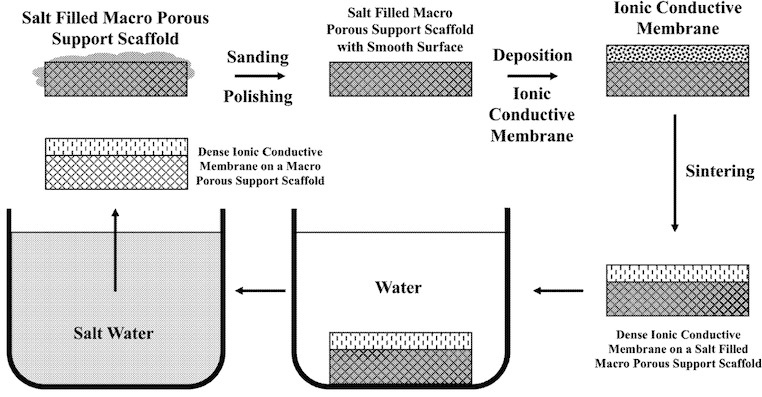
This work could allow for the construction of composite bilayer electrolytes that contain salts,
supported by a porous, inert, isolating silicon carbide framework with tailored pore size distribution and tortuosity.
This work is interesting because a range of comparably low-cost salts exhibit favorable electrochemical properties
(such as favorable ion conductivity, electrochemical window,
wettability in combination with lithium metal,
see 'Semi-solid Li-ion Battery Innovation & Patent Review'),
but are difficult to incorporate into films because of the risk of crack
and micropore formation (risk of short-circuits).
This approach might allow for the construction of ion channels with high conductivity, supported by a mechanically stable silicon carbide
framework that ideally will exhibit a small film thickness (such as 5-10 μm).
A question is if the sintering process does allow for the selective and fast formation of silicon carbide (e.g. using Laser sintering), and
if electrically
conductive carbon forms as an undesired side product
(academic reference).
-
The premium version includes another two patent discussions, plus an Excel list with 50-100 commercially relevant recent patent families.
-
Get a quote to make better informed decisions.
-
Lithium-ion batteries – positive electrode
-
Precursor Ni0.35Mn0.65(OH)2 was prepared through a co-precipitation reaction in which sodium oxalate
was used as chelating agent at 45°C. The precursor exhibits a uniformly distributed carbon content
of 1,813 ppm, a BET specific surface area of 27.8 m2/g and a D50 particle size of 10.2 μm.
Oxide active material was prepared through mixing with lithium carbonate (1 : 1.13 molar ratio) and a heat treatment (900°C, 6 h, oxygen atmosphere).
Half-cell tests exhibit a discharge capacity of 278.4 mAh/g, a first cycle efficiency of 91.5%, and a capacity retention after 50 cycles of 97.3%.
The Figure below exhibits an SEM image of a similar example with different Ni / Mn molar ratio (0.4 : 0.6).
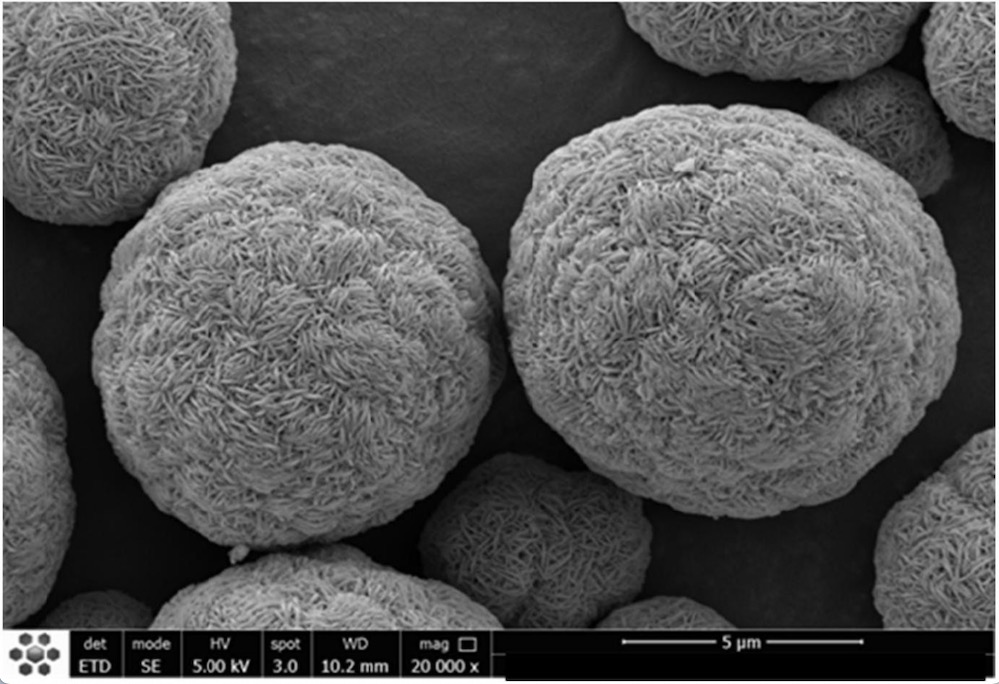
This work suggests that substantially improved performance can be obtained for LRLO (Lithium-rich Layered Oxide) materials
upon use of a carbon-containing chelating agent (such as sodium oxalate) during the co-precipitation process that results
in the formation of a carbon-containing hydroxide precursor.
Although carbon is probably burned off during the calcination
step, it seems to have a very important effect on the morphology of the final material that allows for improved performance.
The Figure above suggests that these material exhibit a comparably high electrolyte / electrode interface area, which apparently does not lead
to elevated parasitic reactions, while the void volume in the particles might reduce the risk of crack formation / mechanical aging effects.
-
The premium version includes another two patent discussions, plus an Excel list with 50-100 commercially relevant recent patent families.
-
Get a quote to make better informed decisions.
-
Lithium-ion batteries – negative electrode (excluding Li metal electrodes)
-
Semiconductor-grade silicon (>10 μm particle size) was mechanically processed in a grinding machine at 2,400 to 3,000 rpm.
During grinding, diethylene glycol and 5 mass% N-allyl-(2-ethylxanthyl) propionamide (NAPA) were added,
The silicon particle size was reduced to 50-100 nm. A boron, phosphorus or copper source was introduced for doping (exact nature of precursor not disclosed).
Subsequently, 10 mass% flake natural graphite and carbon black (quantity not disclosed) were added,
allowing for nano-silicon deposition on the carbon substrate.
This precursor was then heat-treated in a nitrogen-hydrogen or argon-hydrogen atmosphere at 950°C for 8 h, resulting in the final doped
silicon-carbon composite material.
Negative electrodes were prepared with 1 mass%
Super P conductive carbon black and 11 mass% styrene-butadiene-rubber (SBR) binder.
The Table below exhibits half-cell test results for doped and undoped active materials (0.1 C charge / discharge).
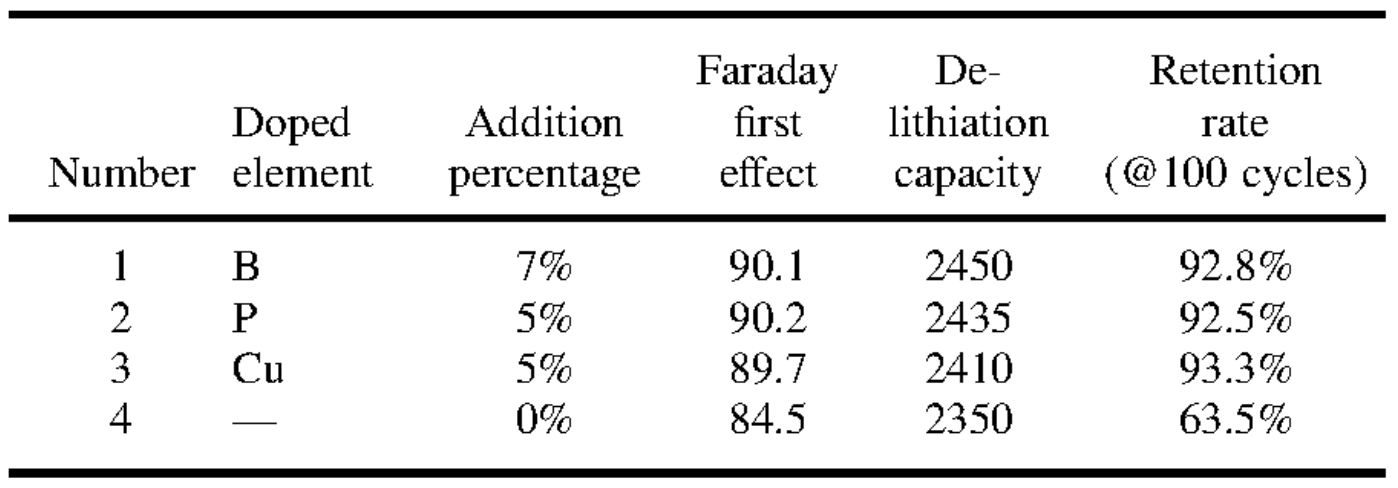
This work illustrates that doping with substantial amounts of boron, phosphorus or copper leads to improved electrochemical characteristics in nano-silicon-coated graphite active materials.
-
The premium version includes another two patent discussions, plus an Excel list with 50-100 commercially relevant recent patent families.
-
Get a quote to make better informed decisions.
-
Fuel cells (PEMFC / SOFC / PAFC / AEMFC) – electrochemically active materials
-
A carbon material (no details specified) was mixed with Zn3(PO4)2 (80 : 20 by mass), followed by a heat treatment
(1,600-2,600 °C, 2 h, vacuum atmosphere). The Zn-based additive reduces the agglomeration rate and contributes to the controlled formation
of pores (see top Figure).
The resulting material was dispersed in a water / alcohol mixture, followed by the formation of a Pt
catalyst on the carbon support material, followed by electron beam irradiation (about 15 min).
The resulting carbon-supported catalyst exhibits a BET specific surface area of 246 m2/g. A Nafion-based membrane-electrode assembly (MEA)
with this catalyst exhibits comparably slow aging (see middle Figure, BOL: beginning of life, EOL: end of life), as compared to a MEA prepared with
a comparative catalyst supported on an air-activated carbon support material (see bottom Figure).
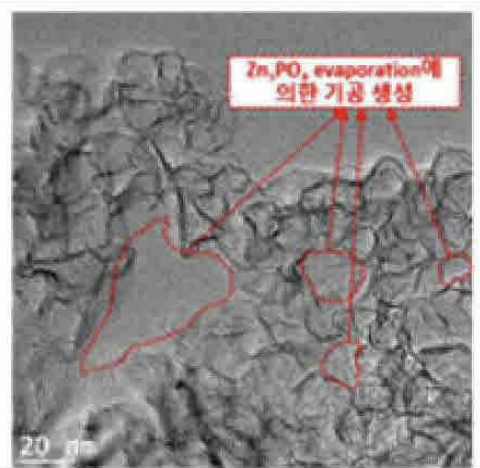

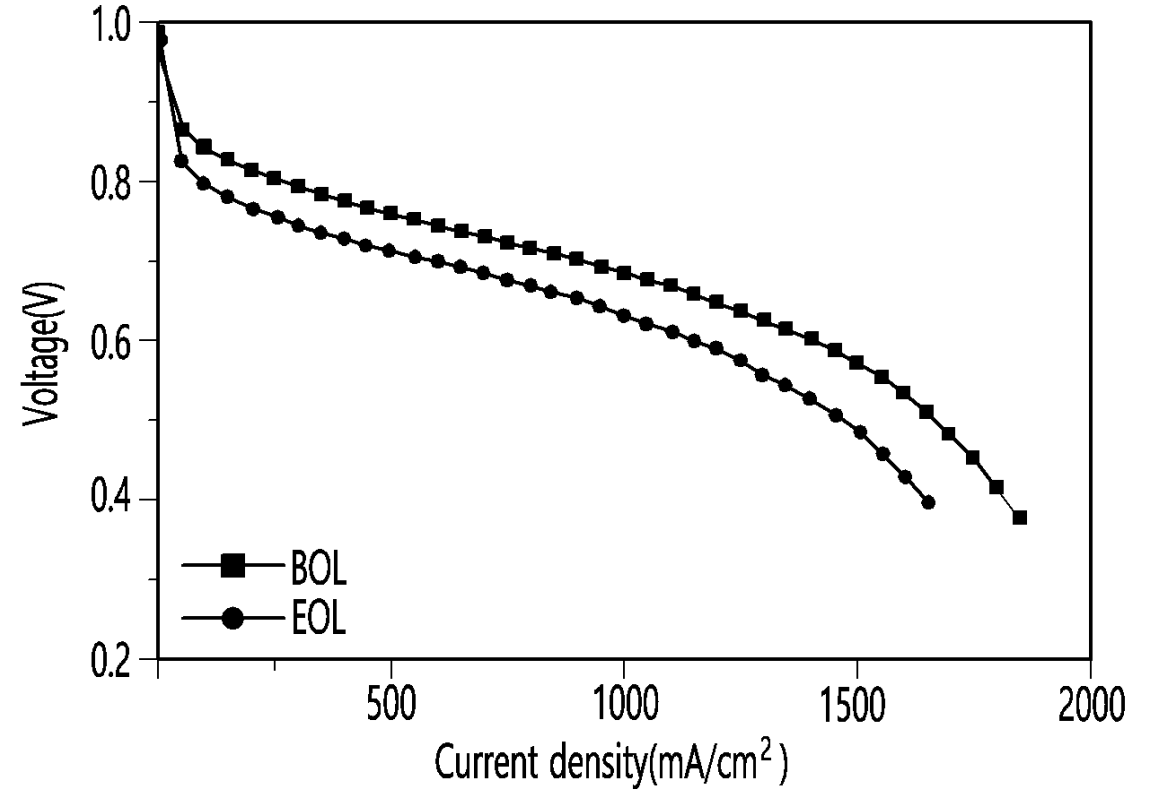
This work illustrates how a heat treatment of a carbon precursor in combination with Zn3(PO4)2 allows for
control of the resulting nanostructure to achieve improved PEMFC performance.
-
The premium version includes another two patent discussions, plus an Excel list with 50-100 commercially relevant recent patent families.
-
Get a quote to make better informed decisions.
-
Triweekly patent lists for other categories (Excel files are included for premium users)
-
- Lithium metal containing batteries (excluding Li-S, Li-Air): XLSX
-
- Lithium-ion batteries – electrolytes – liquid: XLSX
-
- Lithium-ion batteries – separators: XLSX
-
- Lithium-sulfur batteries: XLSX
-
- Metal-air batteries: XLSX
-
- Na-ion batteries: XLSX
-
Prior patent updates
-
2023-11-21
-
2023-10-31
-
2023-10-10
-
2023-09-19
|